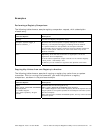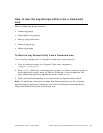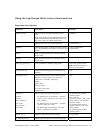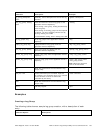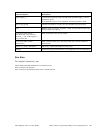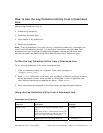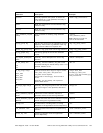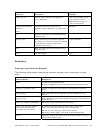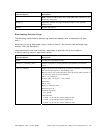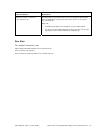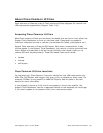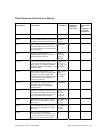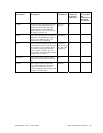
Cisco Support Tools 1.0 User Guide How to Use the Log Collection Utility from a Command Line 149
Command: Description: Example:
rename_log, ren Renames a log collection in the application
server's Repository.
>ren <old_collection_name>
<new_collection_name>
Note: Maximum length for
name is 32 characters
download_log, download
/filename
/index
Downloads a specified log file from the
application server's Repository to a local drive.
download
xml Note: This command is not used with the Log
Collection utility.
read_file, read Directs command input to another input file.
For example, you can direct input to run a batch
file that contains a series of commands
executable by this utility.
>read <filename>
silent Note: This command is not used with the Log
Collection utility.
quit, q Ends the program. >quit
Examples
Creating a Log Collection Request
The following table shows a sample log collection request, with a description of each
entry.
Command Option: Description:
>lctool Invokes the Log Collection utility.
Because no application server is specified, the local machine is used.
>ccolreq my_collection_name Initiates a request for a new collection and specifies the collection
name.
>alg log_group_1 Adds a log group from the application server's Repository to the
request.
>alg log_group_2 Adds a second log group to the request. Each group must be added on
a separate line.
>lcdesc my_collection_description Optionally, creates a description of the request.
>range /start_date 09/01/2003
/start_time 00:00 /end_date
09/01/2003 /end_time 00:00
Specifies the date/time range for logs to collect. /start_date,
/start_time, /end_date and /end_time are all required.
Date format is mm/dd/yyyy. Time format is hh:mm.
Optionally, you can specify /all in place of specific dates/times.
>bin on Optionally, specifies that binary data should be included in the logs. If
not specified, defaults to Off.



